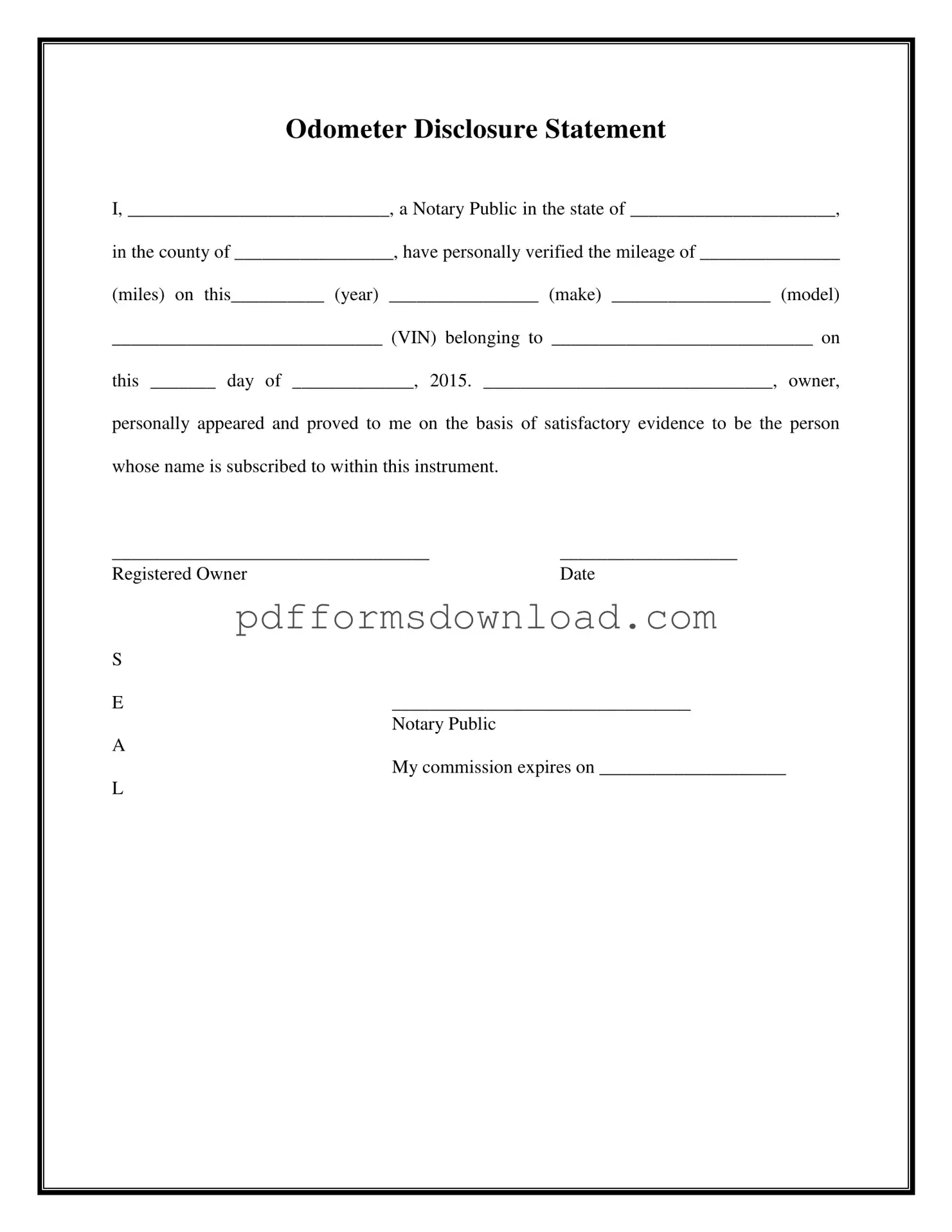What is a Notarized Odometer Statement form?
The Notarized Odometer Statement form is a legal document used to record the mileage of a vehicle at the time of sale or transfer. This form is crucial for ensuring transparency in vehicle transactions. It helps protect both buyers and sellers by providing a verified account of the vehicle's odometer reading. The statement must be signed by the vehicle's owner and notarized by a licensed notary public, confirming the authenticity of the mileage reported.
Why is it important to have a Notarized Odometer Statement?
Having a Notarized Odometer Statement is essential for several reasons. Firstly, it helps prevent odometer fraud, which can occur when the mileage on a vehicle is tampered with to mislead potential buyers. Secondly, many states require this form to be completed during the sale of a vehicle to comply with legal regulations. Lastly, it provides both parties with a clear, documented understanding of the vehicle's condition at the time of sale, which can be beneficial for future reference or disputes.
How do I complete a Notarized Odometer Statement?
To complete a Notarized Odometer Statement, start by filling in your name as the owner of the vehicle, along with the state and county where the notarization will take place. Next, record the current mileage of the vehicle, the year, make, model, and Vehicle Identification Number (VIN). After that, the owner must sign the document in front of a notary public. The notary will then verify the identity of the owner and complete the form by signing and dating it, along with their commission expiration date.
Where can I obtain a Notarized Odometer Statement form?
You can typically obtain a Notarized Odometer Statement form from your local Department of Motor Vehicles (DMV) or equivalent state agency. Many states also provide downloadable versions of the form on their official websites. Additionally, notary public offices may have blank forms available. It’s advisable to check with your state’s requirements, as the form may vary slightly depending on local regulations.
